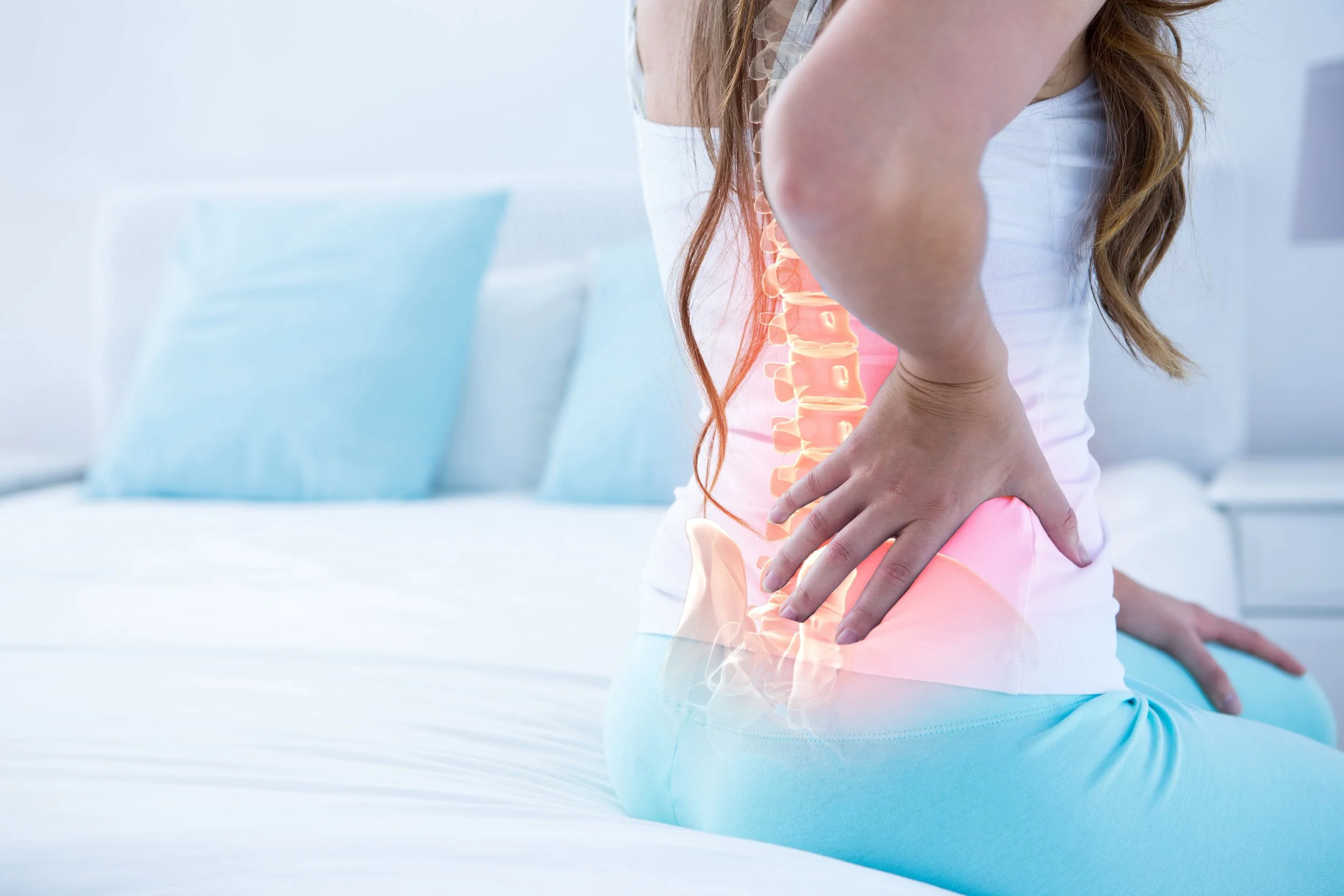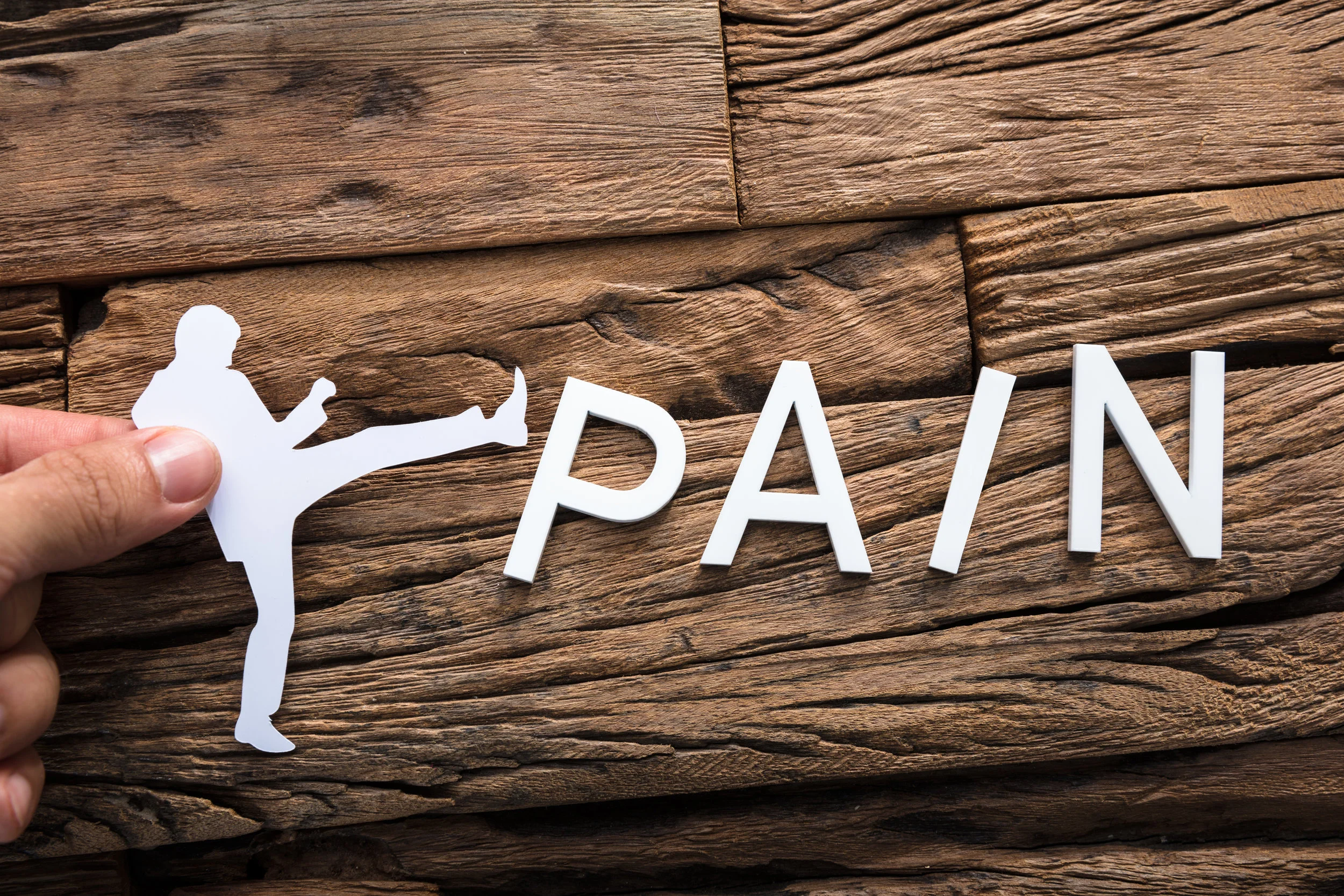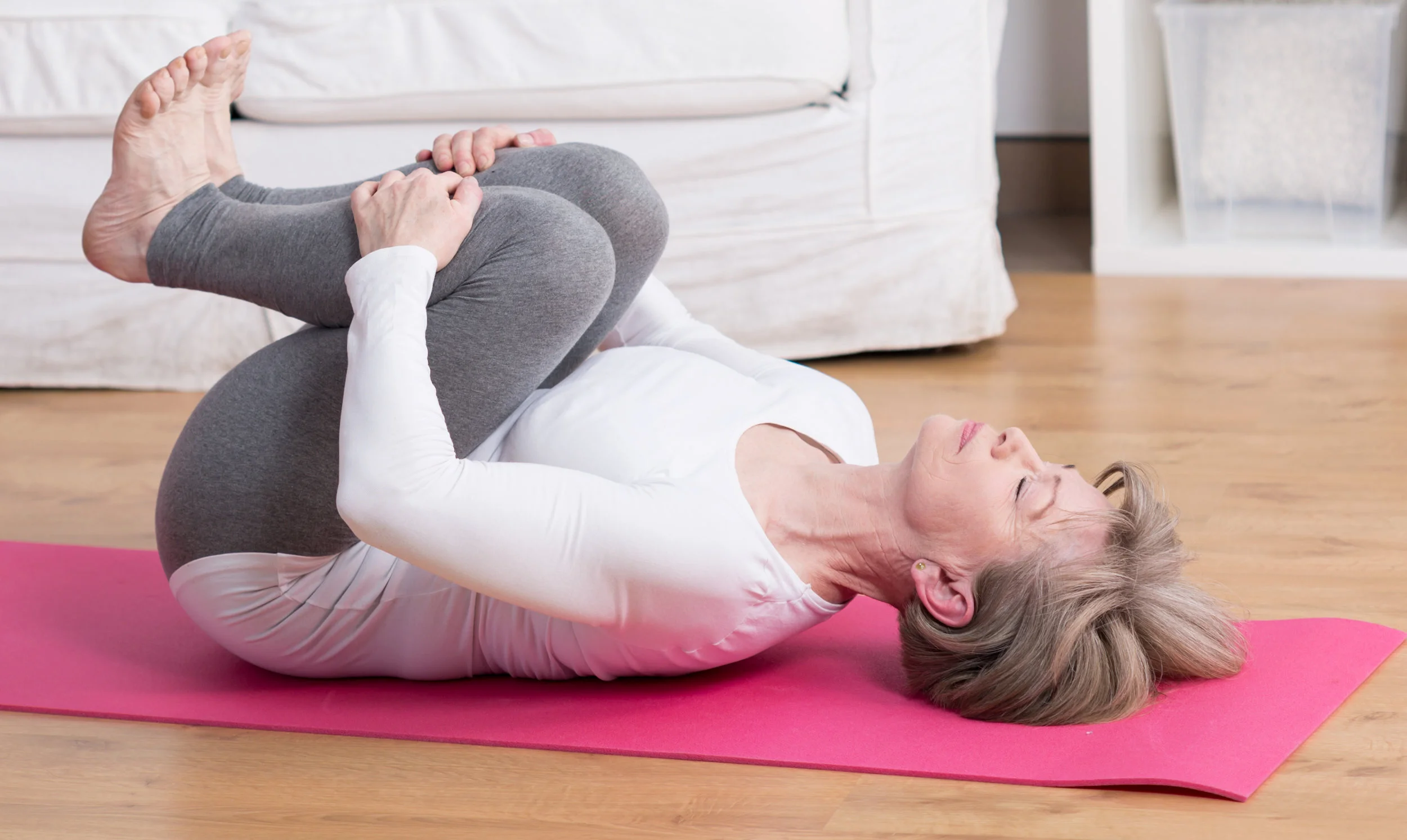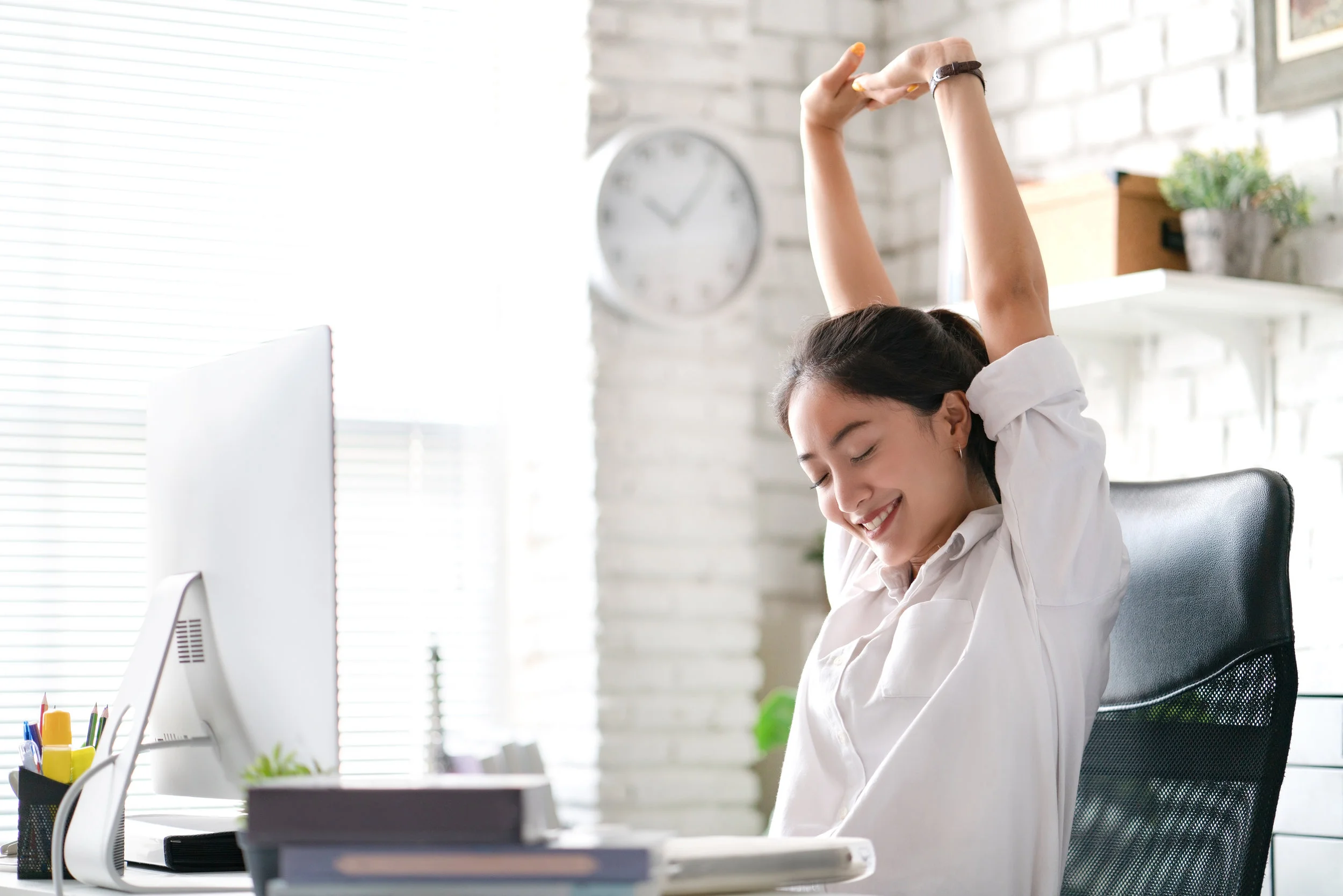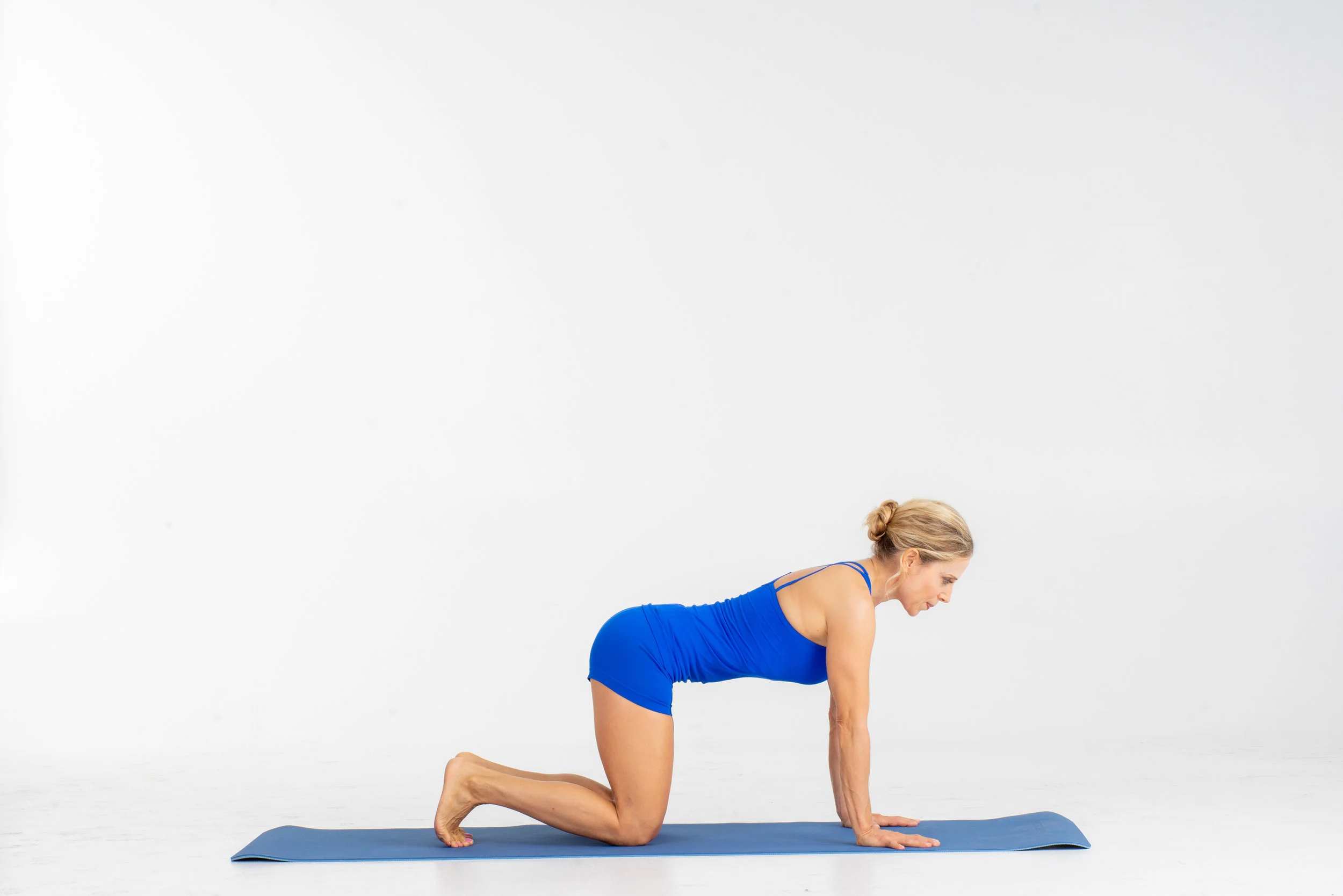Will Pilates Help My Back Pain?
LOW BACK PAIN – A COMMON COMPLAINT
Outside the gym we spend a large amount of time sitting in front of screens, often in seated positions that do not require any core strength or stability. Combine that with wearing a heavy purse (usually on the same shoulder) or carrying too many grocery bags, moving or shifting furniture or boxes around our apartments, working out with improper form, etc., and we increase the occurrence of muscular imbalance, misalignment, and overuse.
Worldwide, back pain is the single leading cause of disability. About 80% of adults at some point in their lives experience some level of debilitating low back pain. Unfortunately, most people are unaware that this aggravating condition can be prevented (or alleviated) by simple exercises. Note the statement from De-Mystifying “The Core”: “Four out of five Americans at some point in their lives suffer debilitating, sometimes excruciating low back pain…” The London Pain Clinic quotes from a study published in The Journal of Orthopaedic & Sports Physical Therapy: “…participants who practiced Pilates over a 4-week period experienced greater relief from the symptoms as compared to those who went through typical treatment programs. The main reason behind this is that the Pilates regimen strengthens the core muscles, prominently including the back.“
PILATES OFFERS RELIEF
The Journal’s study recognizes that regular Pilates practice promotes a well-balanced, resilient core. Low back pain can be significantly reduced or completely relieved through a combination of deep abdominal strengthening, postural awareness, and release and stretching exercises. Pilates’ effectiveness comes especially when you apply the techniques taught into your everyday life.
WHO CAN BENEFIT FROM PILATES
A Pilates specialist or health practitioner recognizes that patients with pain stemming from excessive movement and degeneration of the intervertebral discs and joints are particularly likely to benefit from a Pilates exercise program. Postural asymmetries produce uneven stresses on the spine’s joints and discs. Proper and regular Pilates work results in decreasing wear and tear on the spine. More on this here.
THE CORE
One of my guiding principles is that everything begins from the core. “In fact, your “core” comprises a complex series of muscles that extend far beyond your abs, and include almost everything besides your arms and legs.” I explain further in my blog, De-Mystifying “The Core” : “The CORE is any muscle, or group of muscles, that promote or enhance pelvic and/or spinal stabilization. If you think of your core muscles as a sturdy, central link in a chain connecting your upper and lower body, you will understand that your arms and legs will function best if core muscles are strong and flexible. Physical motion ripples upward and downward to adjoining links of the chain. When you hit a tennis ball, mop the floor, pull open the file cabinet, or make any other movement, the necessary motions either originate in your core, or move through it.”
In our normal lives we are constantly sitting, standing, lifting, twisting, bending over to put on shoes or pick something up, and turning around to see behind us. And, we often are participating in intense workouts or athletics. All of these activities rely on core muscles. You need all 360 degrees of your core to be strong and stable in order to feel and function optimally.
Your back is technically part of your core, which includes your abs, hips, glutes, and back muscles. In Pilates practice, we call this area your “powerhouse.” A strong powerhouse makes exercise safer and more effective. While Pilates exercises are excellent at strengthening your core, they’re also great at helping you identify the cause of pain and imbalances.
Once a person experiences lower back pain, there is further weakness in the core-stabilizing muscles because of abnormal movement patterns. Pilates retrains the core stabilizing muscles and corrects abnormal movement patterns.
THE SPINE and CORE STABILITY
A helpful metaphor is to view the spine as the mast of a ship. The ropes are attached to the mast to help unload the mast so that the mast doesn’t fall over and crack. The mast can’t support its own weight without the ropes. The same is true with the human spine. If you put axial pressure onto it, it can support about 35 lbs. of pressure. We all weigh way more than 35 pounds. So, we rely on certain muscles that attach onto the spine to help take the pressure off of the spine. When those muscles are weak, imbalanced, or not integrated properly, they start going through the static structures - the discs, the facet joints - leading to wear and tear within the spine. Pilates work develops utilization of the correct muscles to take the pressure off the spine and make the spine more durable.
In order for the core to function optimally, it requires a stable pelvis and spine. They are the body’s central foundation – basically, its epicenter. While core strength is the ability to produce force, core stability is the ability to control the force we produce. With this control you can improve balance, stability, and proper posture, and experience less back pain and more functional strength for all movement.
CAUTION!
The important principles of Pilates are consistent with an exercise program that promotes back health. I concur with the advice found in warnings from The London Pain Clinic (as cited above).
Basically, if you do suffer from low back pain (or any other physical ailment), before beginning any new exercise program always consult a health care provider – an osteopath, physical therapist, doctor, or verified specialist. With certain problems, some exercises may not be advised. Some movements in the Pilates system are difficult and challenging. Many of the exercises should be avoided for individuals with significant back pain or degenerative disc disease. If you are advised to take Pilates after physical therapy, the physical therapist should outline the exercise principles identified as particularly important for your rehabilitation.
A general rule for back patients is to avoid exercises that push the spine into extremes of flexion (rounding or C-shape) or extension (arching, or back-bending) or combine flexion with side bending or twisting the spine. These motions place excessive stress on the intervertebral discs.
ALWAYS - If an exercise causes pain - stop and tell the instructor. The exercise may be too difficult and you may need additional help to do it correctly.
Back sufferers should avoid fatigue - either mental or physical. Fatigue leads to loss of proper form and the occurrence of injury.
Use only soft and supportive surfaces, such as soft exercise mats.
TRAINER EXPERIENCE
Pilates’ founder might be proud of the popularity and growth of Pilates. However, I doubt he would be pleased with the influx of "quickie trainings" available to those who believe they can be properly trained in a weekend or two. Joseph Pilates worked at length with his own teachers, allowing them to assist and then finally teach after sometimes as long as 2 or 3 years of training and apprenticeship. He used to express the familiar adages, "Rome was not built in a day," and, "Patience and persistence are vital qualities in the ultimate successful accomplishment of any worthwhile endeavor." Classical training was designed to ensure that Pilates teachers are competent and safe to teach Pilates to the public.
Research whether a Pilates instructor has received training in the Pilates exercise system. Check that he or she is fully cognizant of and understands any identified back problems you have. Exercises performed incorrectly or without competent guidance may lead to worsening the back problem. If you suffer from more serious back problems, you may benefit from several one-on-one Pilates sessions.
THE NEUTRAL SPINE POSITION
A primary lesson you will learn with proper Pilates instruction is the awareness of neutral alignment of the spine. The Neutral Spine position taught in Joseph Pilates’ Philosophy is the most functionally ideal or “perfect” posture for our bodies. Strengthening the deep postural muscles that support this alignment are essential skills for the back pain patient.
The curves in our spine are used to create stability and mobility for taking on the weight and pressure of our bodies in our everyday life. By implementing these techniques into your everyday life, you begin to fix the problem at the cause, rather than only treat the symptoms.
The Core Expert®️ PHILOSOPHY, INSTRUCTION and TOOLS
I emphasize form, breath, and acute awareness to help create a strong mind-body connection. The deeper the connection, the better equipped you are to utilize these principles on your own in everything that you do.
Form equals function. When your form is accurate, you can best take advantage of every exercise to support your spine, and assist with lower back pain. Healthy sitting positions contribute to back health. Employ your “Pilates posture” and core awareness when sitting. Try using a rubber “ball” seat – or, a standing/sitting desk.
EXERCISE = A LIFETIME HABIT
Once you go through an episode of lower back pain, you must address it. If you do nothing about it or just take care of the symptoms, then you are likely to develop a similar kind of episode in the future. Rather than make back pain a lifelong problem, make exercise a lifetime habit - specifically exercises that lead to low-back health.
Again, be mindful throughout the day on your form and posture while going about your everyday activities. This attention will go far to reduce the risk of low-back pain. Just as problems that create most back pain problems happen gradually over time, learning to use your muscles in a way that support - rather than stress - your spine takes time. The time and commitment are one of the most important investments you can make for a life of health and wellness – a life where you feel better, function better, and live better!
The Core Expert®️ VIDEO SERIES
I will be releasing my online instructional videos in just a few weeks! These videos provide transformative tips on Low-Back Health, at-home Pilates mat exercises, and much more.
Follow me on Facebook and Instagram for exclusive contents and updates!
Looking for more Pilates tips? Subscribe to my newsletter here.
